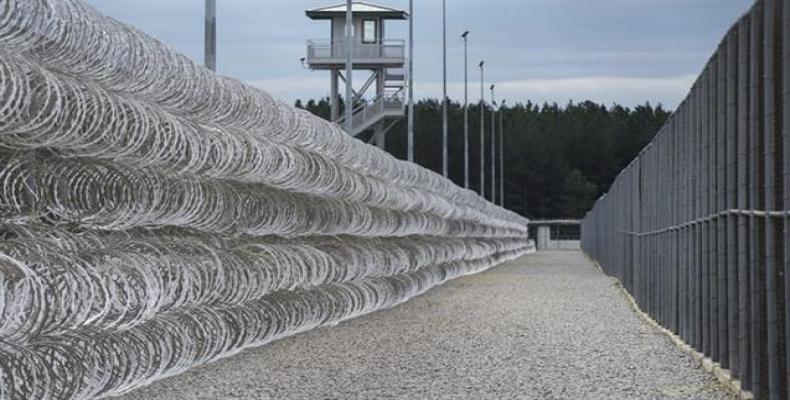بقلم: Pavel Jacomino
2018-04-17 15:52:49
Facebook
Pinterest
Telegram
Linkedin
WhatsApp

Bishopville, April 17 (RHC)-- Seven prison inmates were killed and 17 others were seriously wounded during an eight-hour-long riot in the U.S. state of South Carolina, the deadliest in the United States since 1993. The violence began on Sunday at the Lee Correctional Institution, a maximum security prison in Bishopville, South Carolina, state officials said on Monday. All seven deaths were the result of stabbing injuries with improvised weapons and homemade knives, said Lee County Coroner Larry Logan.
It was the deadliest U.S. prison riot since 1993, when nine inmates and one corrections officer died at the Southern Ohio Correctional Facility in Lucasville, Ohio.
Precisely what may have sparked the violence was unknown. The prison houses about 1,500 inmates, some of South Carolina’s most violent and longest-serving criminals.
The United States has the highest rate of incarceration in the world, with about 2.3 million individuals behind bars. Black Americans were incarcerated in state prisons at an average rate of 5 times that of white Americans, according to a new report.
A recent research by South Carolina journalist Steve Bailey discovered a frighteningly steady rise in violent deaths among inmates in the state in recent years. Last year, there were a total of 18 deaths -- 12 murders and six suicides in South Carolina prisons. In 2016, there were five murders and six suicides; back in 2009 the total of deaths was just two.
Experts say the surge in violence in South Carolina’s prisons has a number of causes, including gang activity, increasing prevalence of smuggled mobile phones that exacerbates drug trade and rivalries. Other factors include staff shortages and the consequent dire morale among officers.
The crisis of staff shortages is replicated across the country. Research by Pew Charitable Trusts has found many states -- including Michigan, Missouri, Kansas, Nebraska, West Virginia and New Mexico -- are struggling with the associated problems of staff shortages and high employee turnover.
Many prison systems are trapped in a vicious cycle. Fewer staff leads to inmates being locked up in their cells for longer hours, and that in turn exacerbates nascent mental health problems that are already so rampant that advocates have dubbed U.S. prisons the “new asylums.”

